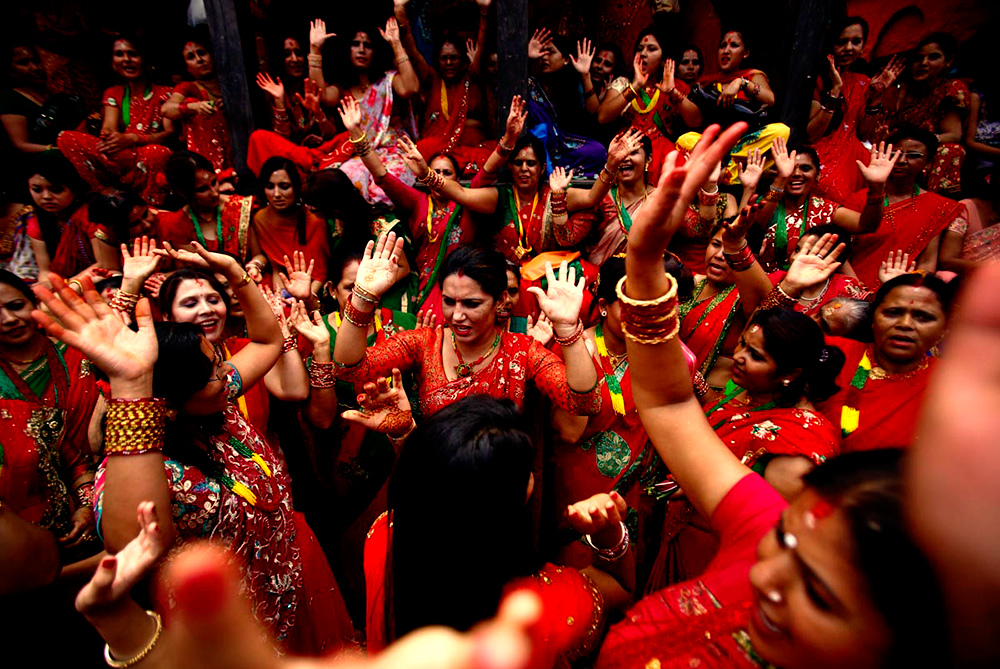
Nepal, a land of diverse cultures and traditions, is home to a multitude of festivals that showcase the rich heritage of the country. Among these festivals, Teej holds a special place, especially for women. Teej is a vibrant and colorful celebration that honors the bond between husband and wife, while also highlighting the strength and resilience of Nepali women. In this blog, we will dive into the essence of the Teej festival in Nepal, exploring its history, significance, and the various customs and rituals associated with it.
The History of Teej
Teej is an ancient Hindu festival celebrated primarily by women in Nepal. Its origins can be traced back to the legendary tales of Hindu mythology. According to one of the most well-known stories, Teej commemorates the union of Goddess Parvati with Lord Shiva. Parvati, the goddess of love and devotion, is believed to have fasted and prayed fervently to win Lord Shiva’s heart. Her unwavering dedication eventually led to their marriage, making Teej a symbol of marital bliss and unity.
Significance of Teej
- Celebrating Marriage: Teej is a festival that celebrates the sanctity of marriage. Married women observe fasts and pray for the well-being and longevity of their husbands. Unmarried women, on the other hand, fast with the hope of finding a loving and devoted husband.
- Cultural Reverence: The festival reflects the rich cultural heritage of Nepal. It provides an opportunity for people to reconnect with their roots and celebrate the traditions that have been passed down through generations.
- Women’s Empowerment: Teej is not just about fasting and prayers; it’s also about showcasing the strength, resilience, and determination of Nepali women. It empowers them to take a break from their daily responsibilities and enjoy some quality time with friends and family.
Customs and Rituals
- Fasting: The most significant aspect of Teej is the fasting done by women. They abstain from food and drink for the entire day, seeking blessings for their husbands’ well-being and prosperity.
- Red Attire: Women dress up in vibrant red attire, often wearing traditional sarees or lehengas. Red symbolizes love and devotion and is considered auspicious for the occasion.
- Swing Decorations: Women gather in groups and decorate swings, often made from colorful fabrics and flowers. They take turns swinging, singing traditional songs, and dancing.
- Mehndi and Makeup: Applying mehndi (henna) on their hands and feet is an essential part of the Teej preparations for many women. They also put on makeup and adorn themselves with jewelry.
- Offerings: Women visit temples dedicated to Lord Shiva and Goddess Parvati to offer prayers, flowers, fruits, and sweets. Temples are beautifully decorated during this time.
- Feasting: The fast is broken after observing the moon at night. Women enjoy a grand feast with their families, which typically includes special dishes like sel roti, puri, and various sweets.
Teej is a remarkable festival that reflects the cultural richness, religious significance, and women’s empowerment in Nepal. It brings families and communities together, strengthening the bonds of love and devotion. As the women of Nepal fast, pray, and celebrate their strength during Teej, they also create lasting memories and traditions that continue to be cherished year after year. This festival is not only a tribute to Hindu mythology but also a testament to the enduring spirit of Nepali women and their unwavering dedication to their families and loved ones.






No comment yet, add your voice below!